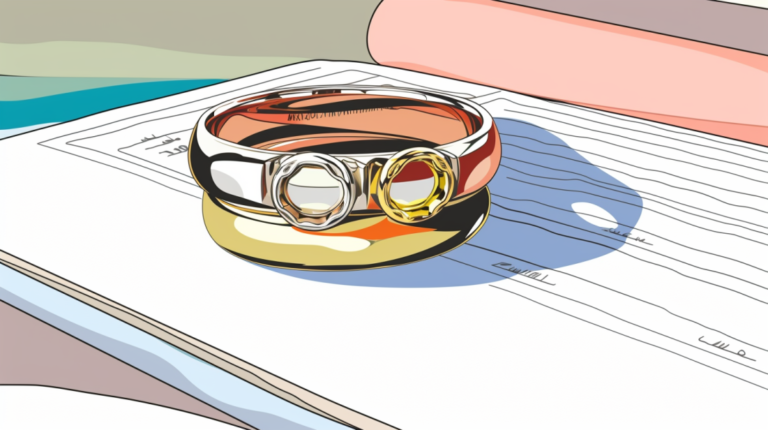Have you ever heard the old saying, “Age is just a number”? Well, in the world of
insurance premiums, that couldn’t be more off-base. Just like many fellow policyholders, I’ve scratched my head as my premiums dipped and climbed with each passing life milestone. Fancy knowing that teen drivers usually fork out three times more for car insurance than those cruising through their middle years? Let’s buckle up and journey together through this blog post where we’ll explore how advancing into your golden years impacts your insurance rates. You’ll not only unravel why these shifts occur but also pick up some practical tips to keep those costs manageable at any stage of your life’s journey. Ready to dive in?.
Key Takeaways
- Age can change how much you pay for car insurance. Teen drivers often pay more. Rates get lower as they grow older and drive safely.
- Older drives also see a rise in cost. After 60 years old, costs go up because of health risks on the road.
- Life insurance costs also go up with age. As you get older, the chance for health problems goes up too. This makes life insurance firms charge more.
- Men usually pay more than women for car insurance. Young men under 18 have rates nearly 50% higher than girls their age! Car insurers think young men are riskier drivers so they charge them more money.
- Save money on car insurance by driving safe and avoiding tickets or accidents, keeping good credit scores, choosing less costly cars to insure, and shopping around to find best deals from different companies!
How Age Impacts Auto Insurance Rates

Your age plays a crucial role in determining your auto insurance rates. With each passing year, you may notice changes in your premiums due to various factors such as driving experience and risk level, linked directly to your age. The younger drivers are often perceived as high-risk clients by insurers due to their lack of driving experience and propensity for risky behaviors like speeding or distracted driving. On the other hand, senior drivers might also see an increase in rates considering health issues that could affect their ability to drive safely on the road.
Average Car Insurance Rates by Age
When it comes to auto insurance, age plays a significant role in determining rates. Here’s how the
average car insurance rates change with age:
| Age | Average Monthly Premium |
|---|
| 16 years | $613 |
| 20 years | $532 |
| 25 years | $247 |
| 30 years | $198 |
| 40 years | $175 |
| 50 years | $165 |
| 60 years | $158 |
| Over 70 years | $204 |
As you can see,
teen drivers pay three times more for car insurance than middle-aged drivers. A 16-year-old driver pays an average of $613 per month for full coverage insurance, which dramatically drops as the driver becomes more experienced. The lowest rates are usually for 60-year-old drivers who pay an average of $158 per month for full coverage. However, rates start to increase again after age 60.
The Gender Gap in Insurance Rates
It’s important to note that gender does play a role in insurance rates, with men often paying more. This is especially pronounced in the younger age groups, where male drivers under the age of 18 have rates nearly 50% higher than their female counterparts. However, this gender gap tends to decrease as drivers age.
| Age Group | Male | Female | Percentage Difference |
|---|
| Under 18 | Highest Rates | Lower Rates | Up to 50% |
| 18-20 | 9%-11% More Expensive | – | 9%-11% |
| 21 and Above | 6% More Expensive | – | 6% |
In conclusion, insurance companies tend to view younger men as high-risk drivers, which often results in higher premiums. This discrepancy, however, decreases as men age and gain more driving experience. Still, it’s important to understand these potential disparities when shopping for car insurance.
Why Young Drivers Pay More
Young drivers often cost more for car insurance. This happens because they
lack driving experience. Insurance companies see this as a
big risk. So, the rates go up to balance it out. Data from the
Insurance Institute for Highway Safety shows that teen drivers are
three times more likely to have a car accident than older folks. Also, teen habits can affect their rates too. Many teens
drive at night or on weekends when crashes happen most often. They also might speed, ignore seat belts or get distracted while driving. A 16-year-old with full coverage insurance pays around $613 each month on average! These facts make young people’s car insurance rates high until they gain more experience and show safe driving habits over time.
Insurance Rates for Senior Drivers
Car insurance gets costly for senior drivers. Once a person turns 60, the
car insurance cost starts to rise. On average, seniors pay $158 per month for full coverage. This increase is due to the
higher risk of injury in case of an accident. Rates keep going up as you age more. After 65 years old,
driving becomes tougher and there can be more crashes. Because
older drivers can get hurt or die in car crashes more than younger ones,
companies charge them more for insurance.
Factors Influencing Life Insurance Rates

Understanding how age influences life insurance premiums can be complex, but it’s integral to finding the best policy. From
risk class assignment to gender differences in rates, we’ll unpack all these intricate elements you need to know. Keep reading as we demystify these factors and guide you on when ideally you should consider purchasing coverage.
How Life Insurance Premiums Rise with Age
Your age can change how much you pay for life insurance. As you get older, the cost goes up. This happens because the
risk of health issues grows with each year. Life insurance firms see this as a higher chance they will have to pay out on your policy. Each extra year can push up your premium by 8-10%. So, it costs less if you buy life insurance when you’re young and healthy. Even the type of policy matters:
term life cover often costs less than permanent cover! You also get put into a ‘risk class’. This takes in your age, sex, health and the way you live (like smoking or not). All these factors work together to set what you pay for coverage.
Risk Class and Premiums
Your risk class is a big deal to insurance companies. They look at things like your lifestyle, health, gender, and age. All of these help them figure out what your life insurance cost will be.
- Age plays a huge role in setting life insurance prices. As you get older, the price goes up.
- From the time you turn 50, your life insurance cost usually rises between 5% to 12% each year.
- Some things make it hard to get life insurance when you’re older. These can be health issues or a higher chance of passing away.
- Each year you age can mean an 8% to 10% increase in the price of your life insurance.
- Insurance companies use special tables of data called actuarial tables. They help predict how long people may live and their chances of dying. The companies use this information when setting up prices for their policies.
The Age to Consider Life Insurance
You may think life insurance is only for old people. That’s not true! Buying life insurance early can save you money.
Rates go up by about 8-10% each year you age. This means more money out of your pocket if you wait too long.
Life coverage is harder to get as we grow older too, with harder health checks needed when over 50 years old. Many factors like
risk class – shaped by age, gender, health and lifestyle – help decide how much you pay for life insurance coverage. Term policies might be a good pick since they usually cost less than lasting life cover plans.
Differences in Premiums for Men and Women
As mentioned earlier, there’s a noticeable difference in insurance premiums between men and women. Typically,
men pay about 6% more for full coverage car insurance than women. Let’s break down these differences in the table below.
| Gender | Insurance Premiums | Reasons |
|---|
| Male | Generally, 6% higher than women for full coverage car insurance. | Men tend to drive more miles and engage in riskier driving behaviors, increasing the likelihood of accidents and thus, the cost to insure. |
| Female | Tend to pay less for car insurance than men. | Women are generally considered less risk on the road due to safer driving habits and fewer miles driven. |
Interestingly, the gender gap in insurance premiums is especially prominent among young drivers. Men aged between 16 and 20 pay between 9% to 11% more for their car insurance than their female counterparts. Even over their lifetime, men’s car insurance rates remain about 6% higher than for women. However, it’s important to note that
gender-based pricing isn’t allowed in all states. In fact, six states specifically prohibit the use of gender as a pricing factor in auto insurance. Despite these differences, keep in mind that many factors can influence your insurance premiums beyond just age and gender.
Understanding The Relationship Between Age and State Insurance Rates

Navigating the relationship between age and state insurance rates is a critical aspect of understanding your car insurance premium. It’s paramount to remember that each state has unique laws which directly impact these rates. While some states, like California, Hawaii, Massachusetts, Michigan, North Carolina and Pennsylvania prohibit using age as a determining factor for auto insurance costs, other regions allow it freely. The national average car insurance rate differs widely by age due to these disparate regulations. However, the underlying rule remains: older drivers are considered more experienced thus potentially lowering their risk of accidents and consequently their premiums; whereas younger drivers who possess less experience tend to have higher premiums due to elevated perceived risk factors.
National Average Car Insurance Rates
The cost of car insurance can vary greatly depending on location, but it’s always interesting to take a look at the national averages. These give us a general idea of how much we can expect to pay, although individual rates may differ.
| Age Group | Average Monthly Rate | Average Annual Rate |
|---|
| Teenagers (16-19 years) | $613 | $7356 |
| Young Adults (20-24 years) | $475 | $5700 |
| Adults (25-49 years) | $300 | $3600 |
| Mature Adults (50-59 years) | $225 | $2700 |
| Seniors (60 and above) | $158 | $1896 |
These figures show that the cost of car insurance decreases significantly as drivers age, with 16-year-old drivers paying the highest rates and 60-year-old drivers enjoying the lowest. However, it’s important to remember
rates start to rise again after age 60. This table also doesn’t factor in the gender gap, with men generally paying more for car insurance than women.
Age Versus Other Factors in Insurance Rates
Age is a big part of what sets your insurance rates. If you are young or old, you may pay more. But other things also matter. Where you live can change how much you pay for insurance. Some states have lower rates than others. Your driving record also counts a lot. People with many traffic tickets or accidents often have to pay more. This is because they seem risky to the insurance company. If your credit score is low, that can make your rate go up too. The kind of car you drive makes a difference as well – some cars cost more to insure than others.
Tips to Save on Insurance at Any Age

Saving on car insurance can be smart at any age. Let’s look at some tips:
- Drive safely: Avoiding crashes keeps your rates low.
- Keep a clean record: No traffic rules breakage means lesser risk for the insurer and hence, lesser premium.
- Join a defensive driving course: This can bring down your rates, especially for new and old drivers.
- Drive less: Some companies offer reduced rates for low mileage.
- Choose the right car: Car type affects insurance cost. Toyota RAV4, for example, is cheaper to insure.
- Boost your credit score: Good credit often leads to lower premiums.
- Ask for discounts: Companies may offer rebates if you bundle home and auto policies or fit your car with safety gear.
- Compare quotes from different companies: This helps find the best rate for you.
Frequently Asked Questions
Delve into pertinent questions that often arise about insurance rates and age, like ‘When does car insurance go down?’ to ‘Which age group pays the most for car insurance?’ For more in-depth answers, keep reading.
When does car insurance go down?
Car insurance rates often start to fall after you turn 25 years old. From age 16 to 19, drivers are at the most risk for accidents, so their rates are higher. As they gain more skill and experience behind the wheel, insurance companies see them as less of a risk. This means lower car insurance costs. However,
around age 60, rates may begin to rise again due to increasing risks tied with aging. So the best time for low car insurance rates is usually from ages 25 to 60.
Which age group pays the most for car insurance?
Teen drivers have the highest car insurance rates.
They pay three times more than middle-aged drivers! This is because they are new to driving.
Insurance companies see them as a high risk for accidents. For full coverage car insurance, men often pay 6% more than women. But, between ages 16 and 20, it can be even higher! Rates for young men at this age can cost from nine to eleven percent more than for young women. These
costs start falling around the age of 25 when
experience is gained and
risky habits drop off.
Does Getting Divorced Affect Your Insurance Rates?
Getting divorced can indeed have divorce and insurance implications. In many cases, insurance rates might be affected, especially when it comes to auto and home insurance. After a divorce, you might need to update your policies or shop around for new ones, taking into account changes in coverage needs and potential multi-policy discounts. It’s advisable to review your insurance portfolio post-divorce to ensure you have appropriate coverage and maintain budget-friendly rates.
Conclusion

Age plays a big role in the cost of your car insurance. Young drivers pay more because they lack experience. But as drivers get older and gain skills, the rates get lower. Yet, with old age comes higher prices again due to health risks on the road.

 Your age plays a crucial role in determining your auto insurance rates. With each passing year, you may notice changes in your premiums due to various factors such as driving experience and risk level, linked directly to your age. The younger drivers are often perceived as high-risk clients by insurers due to their lack of driving experience and propensity for risky behaviors like speeding or distracted driving. On the other hand, senior drivers might also see an increase in rates considering health issues that could affect their ability to drive safely on the road.
Your age plays a crucial role in determining your auto insurance rates. With each passing year, you may notice changes in your premiums due to various factors such as driving experience and risk level, linked directly to your age. The younger drivers are often perceived as high-risk clients by insurers due to their lack of driving experience and propensity for risky behaviors like speeding or distracted driving. On the other hand, senior drivers might also see an increase in rates considering health issues that could affect their ability to drive safely on the road. Understanding how age influences life insurance premiums can be complex, but it’s integral to finding the best policy. From risk class assignment to gender differences in rates, we’ll unpack all these intricate elements you need to know. Keep reading as we demystify these factors and guide you on when ideally you should consider purchasing coverage.
Understanding how age influences life insurance premiums can be complex, but it’s integral to finding the best policy. From risk class assignment to gender differences in rates, we’ll unpack all these intricate elements you need to know. Keep reading as we demystify these factors and guide you on when ideally you should consider purchasing coverage. Navigating the relationship between age and state insurance rates is a critical aspect of understanding your car insurance premium. It’s paramount to remember that each state has unique laws which directly impact these rates. While some states, like California, Hawaii, Massachusetts, Michigan, North Carolina and Pennsylvania prohibit using age as a determining factor for auto insurance costs, other regions allow it freely. The national average car insurance rate differs widely by age due to these disparate regulations. However, the underlying rule remains: older drivers are considered more experienced thus potentially lowering their risk of accidents and consequently their premiums; whereas younger drivers who possess less experience tend to have higher premiums due to elevated perceived risk factors.
Navigating the relationship between age and state insurance rates is a critical aspect of understanding your car insurance premium. It’s paramount to remember that each state has unique laws which directly impact these rates. While some states, like California, Hawaii, Massachusetts, Michigan, North Carolina and Pennsylvania prohibit using age as a determining factor for auto insurance costs, other regions allow it freely. The national average car insurance rate differs widely by age due to these disparate regulations. However, the underlying rule remains: older drivers are considered more experienced thus potentially lowering their risk of accidents and consequently their premiums; whereas younger drivers who possess less experience tend to have higher premiums due to elevated perceived risk factors. Saving on car insurance can be smart at any age. Let’s look at some tips:
Saving on car insurance can be smart at any age. Let’s look at some tips: Age plays a big role in the cost of your car insurance. Young drivers pay more because they lack experience. But as drivers get older and gain skills, the rates get lower. Yet, with old age comes higher prices again due to health risks on the road.
Age plays a big role in the cost of your car insurance. Young drivers pay more because they lack experience. But as drivers get older and gain skills, the rates get lower. Yet, with old age comes higher prices again due to health risks on the road.





